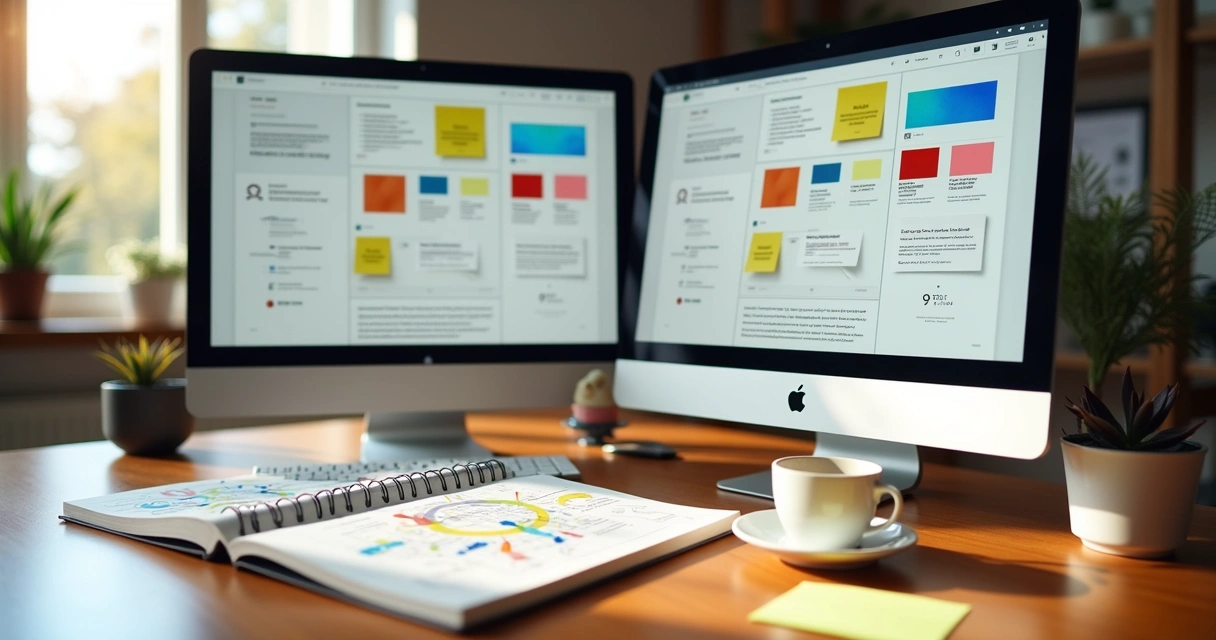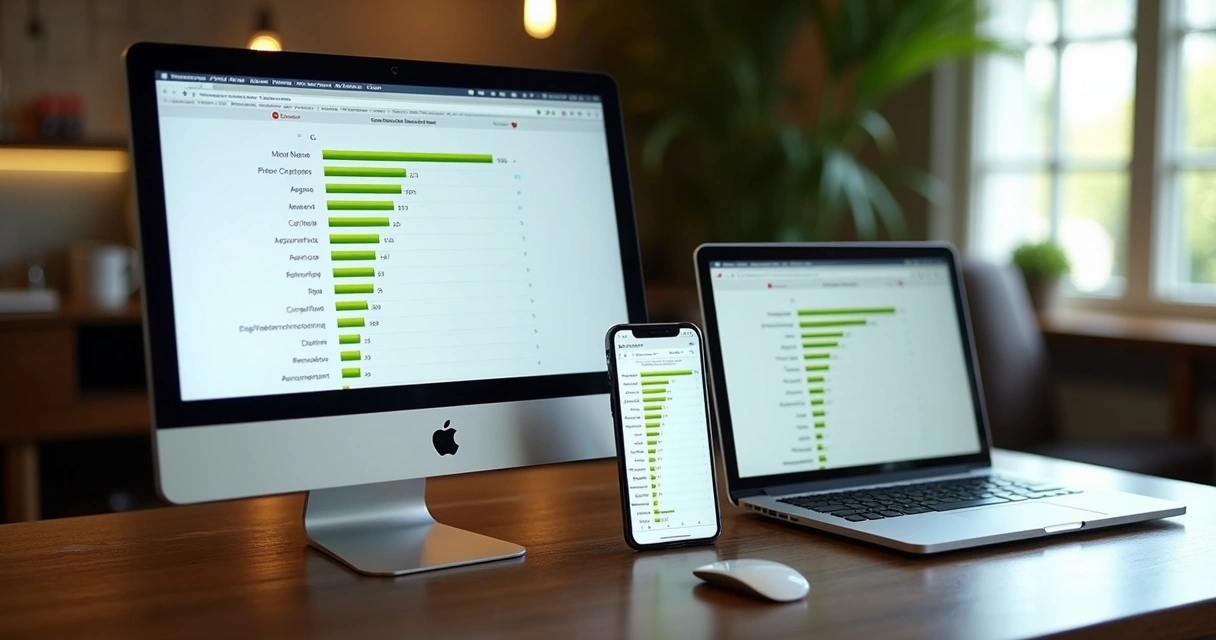The digital world moves fast. In my sixteen years building modern, scalable applications for businesses around the world, I have seen one constant above all others: websites that do not adapt, do not grow. If you are reading this, you’re probably thinking about what a redesign could do for your business. Maybe that old layout is starting to feel stale, or performance is lagging just when you need it most. Maybe you’ve seen competitors jump ahead in search rankings, seemingly overnight. Or you sense your users are not converting the way they should.
I believe every business deserves a website that not only reflects its brand but drives growth—efficiently, reliably, and always keeping users delighted. Over the next several sections, I want to share my experience and strategies as a Senior Software Engineer and Digital Nomad, blending technical skill with business insight. This guide covers much more than simple aesthetics. It’s about how methodical redesign can unlock growth, shape customer perception, and build your foundation for future innovation.
Why website redesign matters for growth
I often tell clients, a website is not a static asset; it’s a living extension of your business. How your digital presence feels and responds directly impacts perception, engagement, and revenue.
- If the navigation is confusing, you lose potential customers in seconds.
- If it’s not mobile-ready, you shut out over half of all web users—sometimes far more, depending on your industry.
- If outdated branding or unclear messaging make visitors wonder if you’re still active, they quickly turn to competitors.
Recent data from the U.S. Department of Health and Human Services shows that modernizing website content more than doubles topic visits and drives up search rankings. Modernization is not just a cosmetic exercise. It directly shapes how your audience finds you, trusts you, and chooses to engage.
Growth starts with giving your users exactly what they need, before they even ask.
But how does a redesign actually enable modern business growth? Let’s start with the user’s point of view.

Building a user-first experience
Intuitive navigation makes or breaks first impressions
In my projects, I always start with this question: How quickly can someone find what they need? If the answer is 'not immediately,' then that’s a problem. Menus that are too complex, buried calls-to-action, or navigation that changes between devices—these are silent conversion killers. Even a beautiful homepage cannot save confusing structure.
When I overhaul navigation for clients, I work with clear hierarchies and common patterns users already 'get.' Labels aren’t clever; they are simple and direct. I test everything with real users, observing where they hesitate. Minor tweaks in menu order or page grouping can shorten the path from entry to conversion by 3, 4, or even 10 clicks.
Mobile readiness is non-negotiable
Over half of global website traffic is now mobile, and for some segments, it’s 80% or more. I have learned this first hand while working remotely across continents. When I audit sites, I watch Google Analytics dashboards and see the shifts hour by hour. Users expect instant, frictionless access—thumb-friendly, tap-targeted buttons, and fluid layouts.
- Every single page should adjust gracefully to screen size.
- Clickable elements must be comfortably spaced. No squinting, no pinch-zooming, no accidental taps.
- Mobile menus need to be obvious—no hunting, no hidden navigation.
A mobile-ready site isn’t an upgrade anymore. It’s an entry ticket.
During every redesign, I incorporate mobile-first principles. I do not just scale down. Sometimes entire sections need rethinking for small screens: differently-ordered content, simplified forms, and prioritized CTAs.
Speed decides if visitors stay or bounce
If you want a single, irrefutable statistic, let it be this: 53% of mobile users abandon sites if they take longer than three seconds to load. I have seen slow-loading carousels, oversized images, or outdated plugins sink otherwise ‘good’ projects. The weight of your pages directly costs you visitors, search ranking, and sales.
When leading redesign projects, I:
- Compress images without visible quality loss.
- Eliminate bloated scripts and redundant CSS.
- Prioritize time-to-first-byte with advanced hosting and CDN strategies.
- Defer non-critical JavaScript, especially for above-the-fold content.
Cloud services like AWS give even small businesses access to edge caching and lightning-fast delivery. I have extensive experience implementing these solutions, no matter your traffic size.
All these details add up. They don’t just impress visitors—they build trust, drive engagement, and let Google (and others) rank you higher.
How a redesign drives real business outcomes
A question I hear from stakeholders is, "Is a redesign really more than a fresh coat of paint?" My answer: Done correctly, a redesign can deliver measurable, ongoing business results.
- Higher conversion rates. Modern layouts, clear calls-to-action, and refined forms reduce friction and guide customers to purchase, book, or contact with confidence.
- Increased search visibility. Google has shifted towards ranking sites based on both technical and user experience signals. Fast pages, structured content, mobile-friendliness, and logical structure all boost your place in search results.
- Longer session durations, repeat visits, positive reputation. Fresh, well-organized content keeps people coming back and sharing with others.
A recent study published on NCBI found a direct link between website quality and higher online purchase intentions through increased trust and positive word-of-mouth. It’s not only about aesthetic or technical improvement; it’s about creating an environment where your visitors feel safe, informed, and motivated to act.
Effective redesign is about outcomes, not just style.
Another practical benefit I’ve witnessed is easier integration of new tools, APIs, and AI-driven features once a site’s structure and code have been modernized. Having a future-ready foundation reduces technical debt and accelerates future innovation—something I prioritize for all clients.

Key phases of a successful redesign project
Every project I lead—whether for a startup, an established company, or as part of my own business, Adriano Junior—follows a structured approach. Skipping steps or rushing always leads to disappointment. Here’s how I break down a proper website overhaul for maximum impact.
Step 1: UI/UX audit and discovery
I start each partnership by auditing the current website’s interface and experience. What’s working? What frustrates users? Where are drop-offs happening? I check analytics, session recordings, heatmaps, and conduct quick user tests. I rely on broad experience, but every business has its own audience patterns—money is lost tailoring for the wrong expectations.
I always include these elements:
- Review of user flows (from arrival to conversion)
- Accessibility checks (contrast, font, keyboard navigation)
- Mobile and device testing (different browsers, OS versions)
- SEO structure analysis (titles, headings, metadata, crawl errors)
- Performance benchmarks on existing infrastructure
In one case, a simple navigation re-labeling—changing 'Solutions' to 'How We Help'—boosted my client’s click-throughs by 28%. Details matter.
Step 2: Defining project goals with stakeholders
No redesign starts with, “Let’s just make it look better.” I always ask: What specific business outcome are you chasing? More leads, larger average order, reduced bounce, new branding, integration with another platform, or even just easier updating for your staff. These intentions shape every following decision—from wireframes to final tests.
For productive planning, I recommend:
- Clearly listing organizational goals and required features
- Assigning a champion on the client side to clarify priorities and feedback
- Setting transparent, step-by-step communication routines
Expect some back-and-forth, but clear goals make feedback actionable and measurable. This phase is where my blend of technical and business expertise truly shines.

Step 3: UI design, brand alignment, and prototyping
I focus heavily on wireframes and prototypes. The value here? Stakeholders can “see” and interact before anything goes live. No more endless arguments about button corners or shades of blue once real sketches are circulating. I align every visual with your brand’s essence—fonts, logos, mood, and message.
Through modern tools like Figma and Adobe XD, I quickly iterate based on feedback, offering interactive demos. This transparency keeps everyone engaged, shouldering your risk of getting lost in revision spirals.
Step 4: Content migration and SEO tuning
Once visuals and experiences are agreed upon, I handle the hardest part: moving your real, live content to the new structure—clean URLs, on-page SEO, and zero disruption to your ranking or marketing campaigns. This is where careful mapping, redirects, and structured data matter.
I pull from analytics and user journeys to prioritize which content needs updating, merging, expanding, or retiring. Research, such as HHS’s 2021–2022 report on user-centric content, shows measurable satisfaction gains when redesign focuses on both structure and message.
In my view, this phase is underappreciated. Many agencies outsource it or treat it like an afterthought. Here, I stay directly involved—sometimes rewriting or reformatting content myself, ensuring tone and clarity. The difference is visible not just in SEO, but in conversions.
Step 5: Testing, launch, and continuous improvement
No redesign is truly finished at launch. I personally conduct rounds of QA—device coverage, browser coverage, performance checks, and usability feedback. Analytics matter before and after. Agencies often hand off projects then disappear. I monitor analytics, goal conversions, and user flows for at least a few weeks post-launch, making adjustments as needed.
According to the SBA’s digital strategy report, analytical frameworks like Google Analytics and customer satisfaction surveys are key for tracking redesign success and guiding future improvements. I help set up these systems for ongoing value.
A website redesign is a starting line, not a finish.

Practical steps for business owners
Let’s break this into actionable advice. Whether you’re a startup founder, marketing manager, or C-level executive, you want the highest impact for your spend.
Define project objectives
- Ask, “Why do we need this?” then define outcomes (e.g., “increase quote requests by 40%”).
- List technical requirements: integrations, e-commerce, forms, backend systems.
- Be honest about current pain points: speed, maintenance, lead quality, reputation.
Clarify your budget and timeline
- Share a real budget range up front—transparency avoids wasted effort.
- Map out “need by” dates—if a massive launch ties to other business events, build in buffer time.
- Ask potential partners (freelancers or agencies) for phased scopes—sometimes quick wins can happen even if the big picture takes longer.
Get stakeholders engaged early
- Include marketing, sales, support, and IT in early discussions, when it counts.
- Designate a single point-of-contact for decisions and feedback.
- Insist on regular, time-boxed reviews—twice-a-week update meetings, for example.
I’ve often seen projects stall simply because stakeholders were only brought in at the review stage—not the planning phase. The earlier everyone is aligned, the smoother the process. That’s something I stress during initial consultations for new redesign projects.
Plan for measurement (not just launch)
- Agree early on which metrics matter—conversions, bounce, average order, NPS ratings, etc.
- Set up analytics and goal tracking before the new site goes live.
- Commit to 30/60/90-day reviews after launch, so improvements continue.
Following these recommendations supports continuous improvement. As the NCBI study on analytical tools underlines, reviewing search terms, user paths, and behavior unlocks ongoing gains in satisfaction and revenue.
Freelancer vs agency—what’s right for you?
I get this question a lot, especially as I offer my own freelance services at Adriano Junior. Both models have strengths, but the choice depends on what’s most important for your project.
What agencies offer
- Large pool of specialists (designers, developers, copywriters, SEO experts)
- Capacity to take on massive projects in parallel
- Brand name recognition, sometimes important for enterprise procurement
- Often strong project management structures and established processes
But, in my experience, agencies can be more rigid and expensive. There’s a premium for scale, but also for overhead. Feedback cycles sometimes get bogged down by process. Smaller businesses, or those with fast-changing needs, sometimes feel “lost in the shuffle.”
When a freelancer is the stronger choice
- Direct access: you work with me, not a series of account managers
- Flexibility: I adapt my pace and process to meet your urgent needs
- Expertise: I bring hands-on deep knowledge, especially for complex backend integration, cloud, and AI
- Cost-effectiveness: fewer layers means budget goes to actual work, not overhead
For example, as a digital nomad, I have helped clients rapidly pivot during periods of fast change—migrating infrastructure, customizing AI-driven features, or optimizing for international audiences. You receive focused, senior-level attention, not junior staff. If you want a sense of the kinds of full-stack and AI integrations I deliver, you can review my recent project portfolio for real outcomes and technical depth.
Some global studios may have vast teams, but rarely can they match my personalized approach, agility, and hands-on technical skill across cloud, PHP, JavaScript frameworks, and AI solutions.

How to choose a partner for your redesign
- Review technical skills: Do they have experience with your tech stack (PHP, JavaScript, AWS, API integrations)? Check for direct project examples.
- Look at their design work: Not just pretty images, but consistent user-first solutions. Interactive prototypes are a plus.
- Ask about process: Will you get regular progress demos? Who is your actual point of contact?
- Check for case studies and client feedback: Seek real-world outcomes, not just awards or logos.
- Alignment with business outcomes: Are they interested in your growth, or just the design fee?
Some well-known agencies might seem attractive, but they can fall short when projects need rapid adaptation, custom integrations, or ongoing personal support. I believe my full-stack, AI, and DevOps background allows me to bridge business needs with technical solutions far better than those following one-size-fits-all templates.
If you are specifically considering strategies for reliable, scalable business architecture, you can find additional insight in my guide on web frameworks and scalable solutions.
AI, cloud, and modern integration: the hidden engines
A modern website is no longer just about pretty visuals. More businesses want advanced integrations—automated lead routing, real-time personalization, recommendation engines, chatbots, multilingual content, advanced forms—not bolted on, but built-in.
With my background in AI and cloud-based architectures, I build for the future:
- Advanced search and recommendation powered by AI (connecting your content to user intent, not just keywords)
- API-driven integrations (CRMs, payment gateways, analytics) for efficient, connected business operations
- Infrastructure-as-Code (IaC) via AWS and other providers, so deployments are repeatable, scalable, and secure
- DevOps best practices—see my complete approach to accelerating software delivery—for continuous improvement
- Global-ready: auto-localization, multi-currency, multi-language, GDPR compliance
The best redesigns are invisible—users simply experience a fast, reliable, and personalized journey each visit.

If you want to learn more about the business value of smart API integrations, my practical post on API integration for modern systems breaks down why this isn’t just a technical afterthought, but a revenue driver.
Content strategy: more than just words
I spend a lot of energy persuading clients that content is not just window dressing. Modern search engines (and users) expect not only fresh, targeted content, but clear organization, accessibility, and relevance at every click.
- Review every content asset: is it current? Useful? Is its “job” obvious?
- Embed structured data for FAQs, reviews, and products—help search engines understand, not just crawl.
- Plan a content refresh and update cycle—not just bulk migration, but routine, small changes post-launch.
- Ensure cross-channel consistency: your message, voice, and offers should align with social, email, and other digital assets.
The real return here is twofold: better organic rankings and more frequent, deeper visits from your customers.
Ongoing support and iterative growth
One of the biggest project risks I see is launching a great new site, then letting it stagnate. Continuous improvement is not a luxury; it’s how market leaders stay ahead. I offer ongoing technical and marketing support—performance tuning, new feature rollouts, bug fixes, analytics reviews—so you never fall behind again.
- Regular health checks: both technical (security, speed) and business KPIs (conversion, user feedback)
- Proactive roadmap planning for new features and integrations
- Staff training for new tools and workflows (CMS, e-commerce, analytics dashboards)
- Quarterly reviews: realign site strategy as products, markets, or business needs evolve
The goal is not just launch—it’s always-on growth. You might find this approach aligned with the philosophy behind my full stack services.

My approach and what makes Adriano Junior different
Plenty of providers offer redesign packages, but I believe my approach stands apart for a few reasons:
- Direct senior expertise: Consult with a seasoned professional at every stage, not just account reps or junior staff.
- Holistic thinking: I integrate strategy, design, DevOps, cloud, and AI—all in-house, all personally managed.
- Agility: I work remotely and adapt to client time zones and needs, often moving faster and more responsively than bigger agencies.
- Evidence-based results: My portfolio includes measurable business outcomes, not just pretty screenshots.
- Focus on long-term partnership: Launch is just the start. I offer ongoing support so your investment keeps paying off.
Where other providers might box you into rigid contracts or out-of-the-box templates, I focus on flexible, creative solutions—always aligned to your real business goals. My projects reveal this blend of strategy, technology, and business impact.
Modern growth comes from expert attention, not factory-assembled templates.
Wrapping up: take the next step in your digital growth
I have seen, time and again, that a well-planned, user-focused website overhaul is one of the most rewarding investments any modern business can make. Whether your priority is improved user satisfaction, higher conversions, or a foundation for cutting-edge features like AI and cloud, the right redesign can propel your company forward.
The difference is in the details—how every click, color, second of loading time, and written word supports a journey that customers will trust and return to. And that requires attention, experience, and a partner invested in your results. Agencies may promise scale, but few can offer the blend of deep expertise, responsive communication, and long-term support that I bring to every project as Adriano Junior.
Let’s transform your digital presence, and drive lasting business growth—starting today.
I welcome you to learn more about my freelance website redesign, full stack, AI, and DevOps services, or simply start a conversation about your business goals. The next chapter of your company’s online story could begin right now.
Frequently asked questions
What is a website redesign service?
A website redesign service is a structured process where experienced professionals overhaul your site visually, technically, and strategically. This includes improving user experience, upgrading design to match updated branding, streamlining navigation, enhancing mobile compatibility, and often re-architecting technical elements for faster performance and better search visibility. My approach involves both UI/UX redesign and backend integration, from the initial audit to post-launch support.
How much does website redesign cost?
Costs vary widely based on scope, complexity, integrations, content needs, and provider expertise. Small business overhauls might start under $5,000, while larger bespoke solutions or enterprise projects often range from $10,000 to $50,000+. As a freelancer, my rates are typically more cost-effective than agencies, with transparent quotes and no hidden fees. For a tailored estimate, I recommend sharing goals and requirements up front.
Is it worth it to redesign my website?
In my experience, yes—especially if your site is outdated, slow, not mobile-friendly, or doesn’t reflect your brand or business goals. Modernizing a website often produces measurable ROI within months, via higher conversion rates, improved search rankings, and better customer retention. Studies like those from the U.S. Department of Health and Human Services confirm increases in user engagement and search traffic after redesigns. If you want to stay ahead of competitors, it’s usually a smart investment.
How long does a website redesign take?
The timeframe depends on project size, content workload, stakeholder feedback, and scope of integration. Most small-to-medium redesigns take between 4 and 12 weeks from initial discovery to launch. More elaborate projects, especially with custom integrations or e-commerce, can take several months. Quick wins and phased launches are possible for businesses on tight schedules—I work with you to match business needs and timelines.
Where can I find top website redesign experts?
You have various choices—agencies, boutique studios, and freelancers—but for direct access to senior-level expertise in full stack, AI, and cloud, working with a specialist like myself offers personalized results. Review portfolios, client testimonials, and case studies before choosing. If you’d like to see my approach and achievements, take a look at my project showcase and services page. I am always open to discussing your needs and recommending the best fit.
